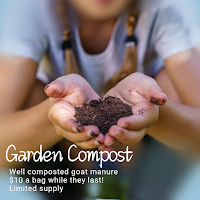Spring Splendor
Spring Sprouts: 10 Tips to Kickstart Your Growing Season
As the sun begins to warm the earth and the days grow longer, it's time to prepare for the joys of spring gardening, whether in traditional garden beds or patio containers. Whether you're a seasoned green thumb or a novice gardener, getting your garden and containers ready for planting can set the stage for a bountiful harvest. Here are 10 tips to help you kickstart your growing season and get your garden and patio containers off to a great start:
1. Plan Your Plot:Take some time to plan out your garden layout, including both traditional garden beds and patio containers. Consider factors such as sunlight, space constraints, and aesthetic preferences when designing your garden and container arrangements.
2. Prep Your Soil: Good soil is the foundation of a successful garden, whether in the ground or in containers. Begin by testing your soil's pH and nutrient levels. If necessary, amend the soil with organic matter such as compost or well-composted goat manure to improve fertility and structure. For container gardening, use a high-quality potting mix specifically formulated for containers.
3. Clear Away Debris: Remove any debris, weeds, or leftover plant material from your garden beds and containers. Clearing away debris helps prevent pests and diseases from overwintering and allows for better air circulation and water drainage.
4. Start Seeds Indoors: For plants that require a longer growing season, such as tomatoes, peppers, and eggplants, consider starting seeds indoors. Use seed starting trays or pots filled with a quality potting mix, and provide adequate light and warmth for germination.
5. Harden Off Seedlings: Before transplanting seedlings outdoors, it's important to gradually acclimate them to outdoor conditions. This process, known as hardening off, helps prevent transplant shock and ensures a smoother transition to the garden and containers.
6. Choose Your Plants Wisely: Select plant varieties that are well-suited to your growing conditions and space constraints. Consider factors such as days to maturity, disease resistance, and space requirements when choosing which crops to grow in both your garden beds and containers.
7. Install Support Structures: For vining or tall-growing plants such as tomatoes, cucumbers, and peas, install support structures such as trellises, stakes, or cages to help them grow upright and maximize space in the garden and containers.
8. Mulch Your Beds and Containers: Mulching garden beds and containers helps conserve moisture, suppress weeds, and regulate soil temperature. Use organic mulches such as straw, shredded leaves, or grass clippings to mulch around plants once they're established.
9. Water Wisely: Provide consistent moisture to your garden beds and containers, especially during dry spells or periods of hot weather. Water deeply and infrequently to encourage deep root growth and drought tolerance in plants.
10. Stay Vigilant: Keep an eye out for pests, diseases, and other potential problems in your garden beds and containers. Regularly inspect plants for signs of damage or distress, and take proactive measures to address issues before they escalate.
By following these 10 tips, you can set the stage for a successful growing season in both your traditional garden beds and patio containers, and enjoy the fruits of your labor in the months to come. Happy gardening!
--------
Did you know we sell Well Composted Goat Manure? Visit the Farm Stand or order online here!





Comments
Post a Comment